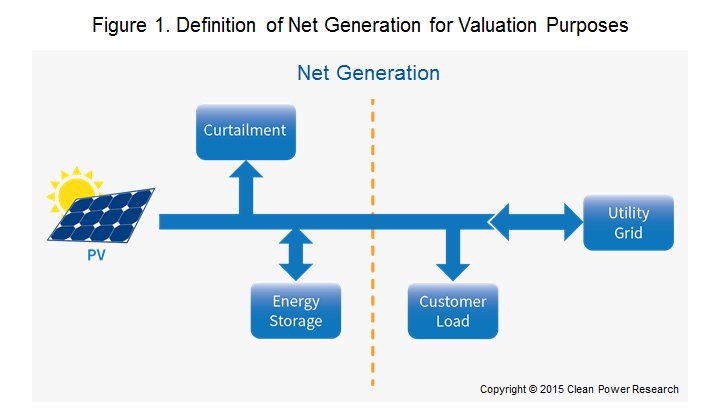Clean Power Research recently took on the challenge of developing a new methodology for performing a hybrid solar plus storage (solar + storage) valuation study for systems in Hawaii. The methodology was commissioned by the Interstate Renewable Energy Council, Inc. (IREC) to help lay the groundwork for mitigating current challenges associated with high penetrations of solar PV with energy storage. The methodology, published in an IREC report, seeks to address two key issues facing the solar industry in the Hawaiian islands:
- Backfeed on the utility’s distribution feeders, and
- Peak load occurring in evening (non-solar) hours.
Both of these issues can potentially be addressed with distributed energy storage:
- Storage could be charged using on-site solar energy, thereby reducing or eliminating export onto the grid, and overcoming the immediate interconnection bottleneck related to reverse power flow concerns.
- Stored energy could be dispatched during the peak that occurs after sundown. Thus, the combination of solar + storage would increase both capacity and energy benefits.
The report lays out a proposed method to quantify the added economic benefits that could result from adding behind-the-meter storage to supplement solar energy generation. This approach—developing the methodology before conducting an actual study—provides stakeholders with visibility into the methodologies. Although the report uses Hawaii as an example, the methodology can be applied in any location.
The impact of storage on load profiles
The economic methods that would be used, such as calculating avoided energy and capacity costs, have largely been developed in other studies for solar-alone resources. Examples of these background studies include those conducted for the Maine Public Utilities Commissions and for the Minnesota Department of Commerce.
Before calculating avoided costs, however, it is necessary to know how the resource impacts the system. The key is to get hourly (or sub-hourly) production profiles, and this is more difficult with hybrid systems. In solar-only studies, production profiles can be obtained from historical weather data and physical attributes of the systems under study. On the other hand, when considering hybrid solar + storage systems, the profile depends on when storage is charged and when it is dispatched.
Since storage dispatch is user-defined, there are an unlimited number of possible load profiles, and so it is necessary to limit these to some reasonable number of expected profiles. One of the interesting innovations in this methodology is the approach used to assume when/how storage is charged, and when/how it is discharged—in short, defining the rules by which these hybrid systems would be expected to be operated.
The methodology includes algorithms that define charge/discharge (or “dispatch”) patterns based on specific objectives, such as maximizing value to the utility, or the customer/owner, depending on specific rate structures. For example, the dispatch of storage to maximize utility capacity benefits may differ from the dispatch to maximize customer benefits from a time-of-use or demand rate schedule.
Defining net generation
Another complexity handled by the methodology is simply defining the energy quantity being evaluated. In the solar-only case, the approach is straightforward: determine the costs and benefits of the energy produced by the system. In the case of hybrid systems, however, the energy lost in the battery and the (potential) curtailed solar energy (energy thrown away due to export restrictions) must also be considered.
The methodology therefore defines a “net generation” energy quantity that includes all of these energy flows, and represents the net impact on the utility (see Figure 1).

Defining key assumptions
Finally, the methodology defines key study assumptions that will have to be decided in carrying out a valuation study, including:
- The number of hours of available stored energy.
- The ratio of energy storage power to inverter power.
- The inclusion of high-value, targeted locations on the utility network.
- The energy export restrictions policy–if and when solar energy can be exported to the grid.
With these additional variables, it’s easy to see how solar + storage hybrid resources make a cost/benefit study much more complex than solar alone. This report shows how to work through the issues by making a few simplifying assumptions about operating objectives and to define a few realistic scenarios.
These approaches will make a valuation study much more manageable, and provide a pathway to quantifying just how much additional benefit may be expected by adding customer storage to solar power systems in Hawaii, and other states that might be interested in further exploring a similar solar + storage value analysis.
